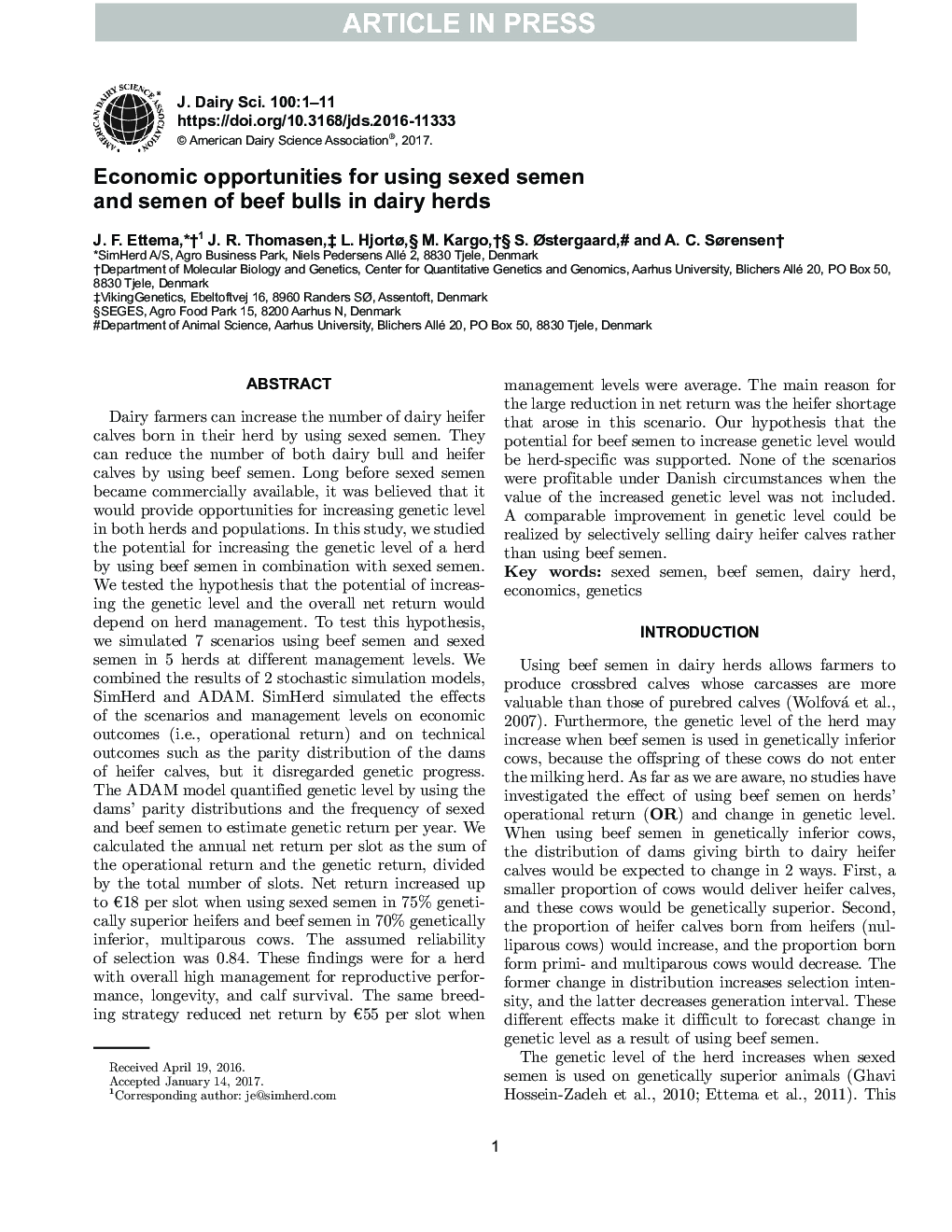| کد مقاله | کد نشریه | سال انتشار | مقاله انگلیسی | نسخه تمام متن |
|---|---|---|---|---|
| 5542209 | 1402515 | 2017 | 11 صفحه PDF | دانلود رایگان |
عنوان انگلیسی مقاله ISI
Economic opportunities for using sexed semen and semen of beef bulls in dairy herds
ترجمه فارسی عنوان
فرصت های اقتصادی برای استفاده از اسپرم جنس و منی گاو گوشتی در گاوهای شیری
دانلود مقاله + سفارش ترجمه
دانلود مقاله ISI انگلیسی
رایگان برای ایرانیان
کلمات کلیدی
منی جنسی گوشت گاو اسپرم، گاو شیری، اقتصاد، ژنتیک،
موضوعات مرتبط
علوم زیستی و بیوفناوری
علوم کشاورزی و بیولوژیک
علوم دامی و جانورشناسی
چکیده انگلیسی
Dairy farmers can increase the number of dairy heifer calves born in their herd by using sexed semen. They can reduce the number of both dairy bull and heifer calves by using beef semen. Long before sexed semen became commercially available, it was believed that it would provide opportunities for increasing genetic level in both herds and populations. In this study, we studied the potential for increasing the genetic level of a herd by using beef semen in combination with sexed semen. We tested the hypothesis that the potential of increasing the genetic level and the overall net return would depend on herd management. To test this hypothesis, we simulated 7 scenarios using beef semen and sexed semen in 5 herds at different management levels. We combined the results of 2 stochastic simulation models, SimHerd and ADAM. SimHerd simulated the effects of the scenarios and management levels on economic outcomes (i.e., operational return) and on technical outcomes such as the parity distribution of the dams of heifer calves, but it disregarded genetic progress. The ADAM model quantified genetic level by using the dams' parity distributions and the frequency of sexed and beef semen to estimate genetic return per year. We calculated the annual net return per slot as the sum of the operational return and the genetic return, divided by the total number of slots. Net return increased up to â¬18 per slot when using sexed semen in 75% genetically superior heifers and beef semen in 70% genetically inferior, multiparous cows. The assumed reliability of selection was 0.84. These findings were for a herd with overall high management for reproductive performance, longevity, and calf survival. The same breeding strategy reduced net return by â¬55 per slot when management levels were average. The main reason for the large reduction in net return was the heifer shortage that arose in this scenario. Our hypothesis that the potential for beef semen to increase genetic level would be herd-specific was supported. None of the scenarios were profitable under Danish circumstances when the value of the increased genetic level was not included. A comparable improvement in genetic level could be realized by selectively selling dairy heifer calves rather than using beef semen.
ناشر
Database: Elsevier - ScienceDirect (ساینس دایرکت)
Journal: Journal of Dairy Science - Volume 100, Issue 5, May 2017, Pages 4161-4171
Journal: Journal of Dairy Science - Volume 100, Issue 5, May 2017, Pages 4161-4171
نویسندگان
J.F. Ettema, J.R. Thomasen, L. Hjortø, M. Kargo, S. Ãstergaard, A.C. Sørensen,
